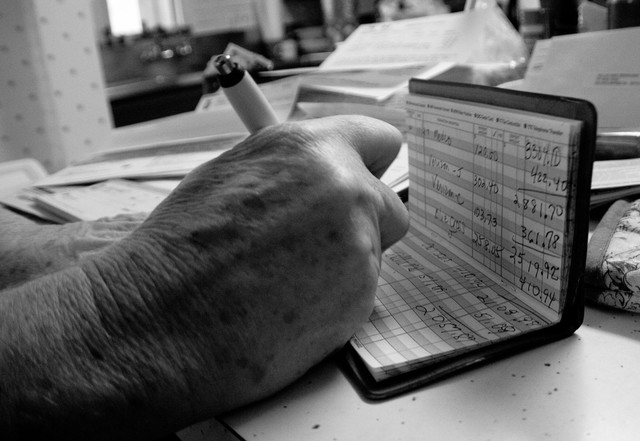WASHINGTON — Writing a check has always been a fundamentally strange act. There’s the fussy ceremony of writing out the amount in words and drawing the squiggly line across the remainder of the space, ostensibly to protect against a type
WASHINGTON — Writing a check has always been a fundamentally strange act. There’s the fussy ceremony of writing out the amount in words and drawing the squiggly line across the remainder of the space, ostensibly to protect against a type of fraud — tampering with individual digits — that’s quaint by today’s standards. There’s the questionable business of handing a complete stranger a document with your bank account and routing number printed plainly across it.
And of course, the memo line — an open invitation to humiliate your friends and leave passive-aggressive notes to your creditors.
Today, Americans are writing fewer checks than ever. According to the Federal Reserve’s most recent study of how Americans pay for things, “the number of checks paid declined more than 50 percent since 2000.” Meanwhile, electronic and card payments tripled over the same period.
As check use declines, we tend to forget the details of that strange ceremony of writing them. And naturally, we turn to Google to jog our memories. Falling check use has been accompanied by a rise Google searches for “how to write a check.” Today, those searches are nearly five times as prevalent as they were 10 years ago. And each year, those searches peak in late August and early September — when kids are returning to college. Students living off-campus for the first time are likely facing the daunting task of writing their first checks, for electric bills, cable payments or especially for rent.
As Bloomberg News notes, checks still dominate the world of rent payments. “The rental market is huge and fragmented,” Bloomberg writes. There are millions of landlords overseeing just one or two properties, and for these folks there’s little reason to invest the money required to move to an electronic or card payment system.
Looking at the geography of check befuddlement, searches for “how to write a check” appear to be clustered in the Northeast — Pennsylvania leads the pack, followed by Delaware, New York, Massachusetts and Hawaii. There are a lot of colleges in the Northeast, which fits the hypothesis of confused college kids driving the trend. But it doesn’t explain why there are also a lot of people looking for check-writing help in Oklahoma, or in Louisiana.
Overall we should be welcoming the trend of falling check use. They’re cumbersome to write, and cumbersome to cash. They invite fraudulent behavior. And with the information contained on them, writing a check to someone is akin to giving them the keys to your bank account, and trusting that they won’t help themselves to what’s inside.
But in terms of pure volume we’re still writing a ton of checks — roughly 18.3 billion per year, according to the Federal Reserve. That’s about 77 checks for every adult resident of the U.S. While the End of Checks may indeed be on the horizon, it’s not quite here yet.



